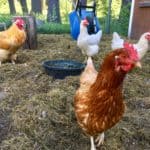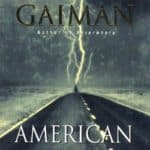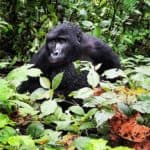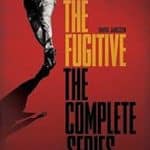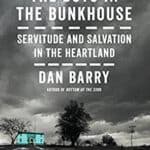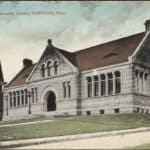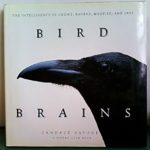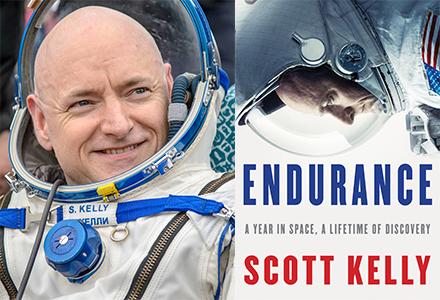
12
AprShooting for the Moon: Part II
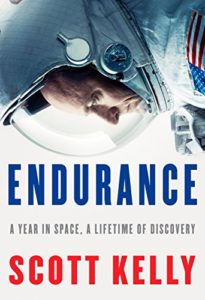 In addition to the many anniversaries I mentioned last week, the Space Shuttle program has two this year: the 35th anniversary of the first American woman in space, Sally Ride on Challenger STS-7, and the first African-American in space, Guion Bluford, two months later on Challenger STS-8. As with last week’s column, all titles mentioned are available through the Minuteman Library Network.
In addition to the many anniversaries I mentioned last week, the Space Shuttle program has two this year: the 35th anniversary of the first American woman in space, Sally Ride on Challenger STS-7, and the first African-American in space, Guion Bluford, two months later on Challenger STS-8. As with last week’s column, all titles mentioned are available through the Minuteman Library Network.
The first Space Shuttle flight with astronauts was in 1982 on Columbia. The final flight of the Space Shuttle program was in 2011. Unlike earlier spacecraft, the shuttle was designed for reuse. The program had 135 flights with all but two, the Challenger explosion in 1986 and the Columbia explosion in 2003, returning safely. Spacelab was flown on the Space Shuttle until its decommissioning in 1998. Shuttle crew constructed portions of the International Space Station and launched the Hubble space telescope.
The 1978 astronaut selection group included the first six American women astronauts and the first African-Americans who would go into space, three men. Sally Ride’s first flight was twenty years after Russian cosmonaut Valentina Tereshkova became the first woman in space. Frederick Gregory’s first spaceflight in 1985 made him the first African-American shuttle pilot on Challenger STS-51B. Mae Jemison (selected in 1987) was the first African American woman in space in 1992 on Endeavor STS-47. Eileen Collins (selected in 1990) was the first female shuttle pilot on Discovery STS-63 in 1995 and first female commander on Columbia STS-93 in 1999.
Margaret Lazarus Dean’s 2015 book Leaving Orbit: Notes from the Last Days of American Spaceflight is my favorite of the adult books mentioned this week or last. Although the book is primarily about the end of the space shuttle era, it includes quite a bit of NASA history. Dean writes about traveling to Florida for the final launch of each of the remaining three shuttles and the friends she makes during her visits, including NASA employees and other fans of space flight.
Space Shuttle: the First 20 Years includes essays and interview excerpts from many shuttle astronauts, as well as photos from training, launches, space flight, and landings. Scott Kelly is one of the few widely known recent astronauts. In 2015 he spent almost a year on the International Space Station. His memoir Endurance: a Year in Space, a Lifetime of Discovery describes that experience. Leland Melvin was an engineer mission specialist after being drafted by Detroit Lions and having to leave the NFL due to injury. His memoir is Chasing Space: an Astronaut’s Story of Grit, Grace and Second Chances.
There are some wonderful children’s books written by astronauts. Buzz Aldrin’s book Look to the Stars is illustrated with beautiful paintings and provides an overview of significant events in the history of flight and American space exploration. Michael Collins’ book, Flying to the Moon and Other Strange Places, is about his early career, training for space, and the first lunar landing. To the Stars!: First American Woman to Walk in Space, by Carmella van Vleet and Kathy Sullivan is about Kathy Sullivan’s first spacewalk. Mae Jemison wrote a biography for YA audiences, Find where the Wind Goes.
Of course there are lots of children’s books about space not written by astronauts. Two about female astronauts are: Almost Astronauts: 13 Women Who Dared to Dream, by Tanya Lee Stone, and Mae among the Stars, by Roha Ahmed. Not surprisingly there are several about Apollo 11 including One Giant Leap by Robert Burleigh, and Team Moon: How 400,000 People Landed Apollo 11 on the Moon, by Catherine Thimmesh. In Race to the Moon: an Interactive History Adventure, by Allison Lassieur, readers can choose to be a scientist working on rocket technology, a reporter covering the space story, or a member of Mission Control for Apollo 11. If your child is interested in what it takes to be an astronaut, you should check out Go for Liftoff!: How to Train like an Astronaut, by Dave Williams and Loredana Cunti. Ready, Jet, Go is a PBS kids show about our solar system. Season one is available on Hoopla. There are also books about the moon, the sun, the solar system, and space.
I suspect anyone who has been to a space-themed museum with elementary or middle school age children has seen the freeze dried ice cream for sale at the gift shop. Many may have given into the pleas to purchase it. My parents did. I hated it. Turns out astronauts did too. According to The Astronaut’s Cookbook: Tales, Recipes, and More, by Charles T. Bourland and Gregory L. Vogt, it only flew on Apollo 7. This cookbook is somewhat like an Alton Brown cooking show with information about the science of food including the moisture content of various foods and how that impacts the foods’ suitability for space flight. Tortillas are better than bread because they don’t make crumbs, and it turns out food packaged for vending machines is also good for going into space.
For those who want to visit some of the places where space history happened, there are several great options. MLN collections include travel guides to the general geographic areas where these sites are located. Alan Shepard’s Mercury Spacecraft can be seen in Boston at the John F. Kennedy Presidential Library and Museum. Kennedy Space Center in Florida is about a one hour drive from Orlando and well worth the trip. All of the Mercury, Gemini, Apollo and Space Shuttle launches took place there. In addition to the original Mission Control, visitors can also see the Astronaut Hall of Fame, Mercury, Gemini, and Apollo spacecraft, an unused Lunar Module, and the Space Shuttle Atlantis, which made the final flight of the shuttle program. Space Center Houston, Texas, site of Mission Control since Project Gemini, is also the site of astronaut training and the Lunar Receiving Laboratory where astronauts were quarantined after going to the moon. The Virginia Air & Space Center in Hampton, Virginia, is about a half hour drive from Colonial Williamsburg. In addition to being where the women of Hidden Figures worked, the museum has Mercury, Gemini, and Apollo spacecraft on exhibit. At the Intrepid Sea, Air & Space Museum in New York City visitors can see the Space Shuttle Discovery. The USS Intrepid served as a recovery ship for some Mercury and Gemini missions. At the California Science Center in Los Angeles visitors can see the Space Shuttle Endeavor. The Museum of Science and Industry in Chicago, Illinois has Mercury and Apollo spacecraft on exhibit. The U.S. Space & Rocket Center in Huntsville, Alabama is also the home of Space Camp which has programs for children, families, and adults. The Smithsonian has two aerospace museums, one on the National Mall in Washington, DC, and a newer building at Dulles Airport in Chantilly, Virginia. The Udvar-Hazy Center in Chantilly has the Space Shuttle prototype Enterprise on exhibit, as well as a Gemini capsule. The Smithsonian National Air and Space Museum in Washington, DC has Mercury and Gemini spacecraft, the Apollo 11 Command Module, and an unused Lunar Module on exhibit. Over the next 18 months the Apollo 11 Command Module will be traveling around the country as part of the traveling exhibit “Destination Moon: the Apollo 11 Mission.” So if your travels take you to the Saint Louis Science Center in Missouri, the Senator John Heinz History Center in Pittsburgh, or The Museum of Flight in Seattle, maybe you can see it on tour. If you have European travel plans, you can see the Apollo 10 Command Module at the Science Museum in London, England.
Victoria Andrilenas is an Adult and Information Services Librarian at the Morrill Memorial Library in Norwood, Mass. Look for Victoria’s column in the April 12th edition of the Norwood Transcript & Bulletin.

